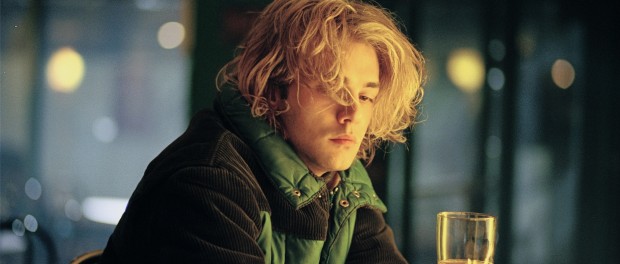The Eye of the Abused. Tom à La Ferme Review.
Xavier Dolan’s career as a filmmaker seemed to breakthrough after receiving much acclaim for his I Killed My Mother (2009), Heartbeats (2010) and Laurence Anyways (2012). More recently Dolan has directed Tom à la ferme (2013), an adaptation of the Michel-Marc Bouchard play, and award winner at the Venice International Film Festival.
Tom à la ferme is an unusual film – a psychological thriller, an exploration of “darkest” desires and can become an easy target of male sexist critique for homophobia. The film is full of exploitative, extended acts of blatant cruelty and abuse sequences: a man named Francis (Pierre-Yves Cardinal) assaulting the main protagonist Tom (Xavier Dolan) – who is homosexual. The narrative grows from the extreme depiction of the sadistic and brutal abuse of an innocent, young man Tom at the hand of his deceased boyfriend’s socially and sexually oppressed brother. The film presents one of the most convincing pictures of physical and emotional damage and humiliation of an individual suffering from violent abuse. Do you remember a story of Little Red Riding Hood? A girl strikes off into the wilderness only to be captured and eaten by a wolf (whom she imprudently trusts), although a passing woodsman finally saves her. Personify the wolf, read “abuse” for “eat”, ignore the woodsman, and you have Tom à la ferme.
It seems like throughout the film, Xavier Dolan takes more joy in presenting its hero’s degradation than his victory. The film starts off at an un-comforting pace, as the hero plunges into insecurity in a country house of his deceased boyfriend’s family. Then the assault begins, intensifies and ends an hour and a half later – towards the end of the film. The perverse simplicity of the story and the minimalist mise-en-scène forces the spectator to follow the key events and explore them almost living them together with the victim and not with the assailant. The roles finally switch when Tom’s long and pensive healing leads him to the idea of escaping the horror he’s been living. Clearly, at this point the film shifts from wicked reality of Tom’s life to an almost impossible escape, where Tom finds all his emotional strength and “fights back” – he is neither weak nor helpless anymore. On the contrary, educated, wealthy and emotionally strong Tom is opposed to his assailant depicted as utterly impoverished, uneducated and unemployed loser. What is indeed surprising is that Tom’s aggressor is not an odd man at all. Spectators conclude that Francis does not get any of joy from his act. Instead it is all mainly about male competition – setting up and sustaining male hierarchies. It seems like Francis’ cruelty is for his edification.
Tom à la ferme challenges male authority, rendering it in the end, absurd and pointless, and examines homosexual men’s lack of power and voice. The explicit homophobic and voyeuristic sense of the film dominates. On one hand, Dolan presents his hero as weak, fragile, abused and, at the same time, sickly fascinated with his oppressor. On the other hand, the filmmaker succeeds in depicting a strong homosexual male character of the hero who grows into a dominant, self-confident, selfish and thrill-seeking man.
The portrayal of violence and power is at the center of the narrative. It examines the victim, his identity and race, his socio-economic status, his culture. Tom à la ferme pits a straight, sadistic man against a homosexual man and makes overt gestures towards male sexism. It is about a man who has been exposed to excessive homophobia, and who, in the end, turns away from the violence once imposed on him and escapes back to the city, leaving his assailant at once lonely and emotionally wounded.
Tom à la ferme is playing in theatres now.









